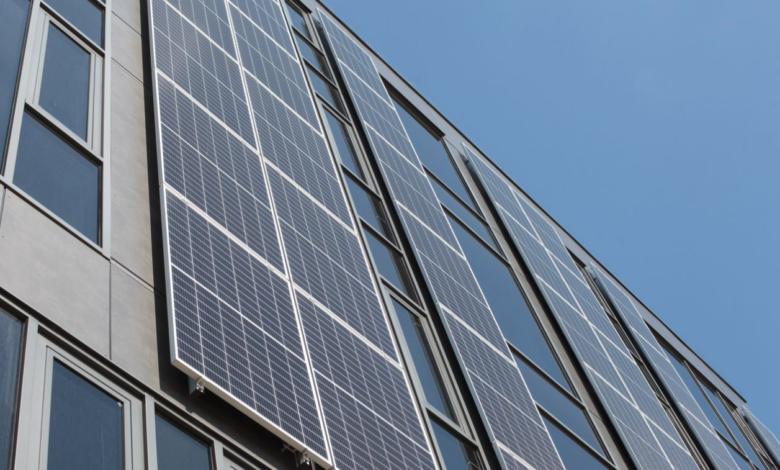From Korea the vertical solar panels with omnidirectional anti-reflective

How to reduce vertical photovoltaic reflection losses
Vertical solar panels are nowadays one of the winning strategies to increase the installed photovoltaic capacity while minimizing the space occupied. Especially when plants are intended for areas with limited land use, such as urban or agricultural areas. Not only that. The possibility of integrating them directly into the building, be it building facades, hydroelectric dams or retaining walls, offers interesting opportunities when the ultimate goal is a higher power density.
However, the vertical photovoltaic has not negligible characteristics, related to its geometry. Starting with the variation of the angles of incidence of direct light depending on the orientation of the front face of the panel, the solar altitude and the solar azimuthal angle. These angles can be relatively wide during the day. It is therefore essential to equip the vertical solar modules with an anti-reflective technology not only effective but suitable for its peculiarity.
A new anti-reflective coating for vertical solar panels
Here comes into play a new research conducted by a team of physicists from Kyung Hee University, South Korea in collaboration with engineers from Hyundai Motor Group. The group has developed an omnidirectional anti-reflective coating specifically designed for vertical solar panels.
That Hyundai is involved in the project is not surprising. The Korean giant has already begun experimenting with integrated photovoltaics in their vehicles with different solutions. At the moment all applications, prototypical or not, are thought horizontal – regarding the upper part of the body – new developments with different geometries cannot be excluded shortly.
“In this study, we address the challenges faced by vertical photovoltaic modules in coping with large” angles of incidence “and in ensuring their economic sustainability. Based on geometric optics, we have designed an asymmetric wedge-shaped custom microprism matrix“, reads the publication on Cell Reports – Physical Science.
read also Photovoltaic roofs in Europe, which country is more committed?
An optically embossed PET film
The new coating created by South Korean scientists is a PET sheet embossed with cuneiform microprisms with a 250 μm pitch. Based on the tests carried out the sheet shows a remarkable ability to mitigate losses due to reflection. To be precise, the coating showed less than 0.01 surface reflectance at all incidence angles and direct sunlight wavelengths. “The effect of light entrapment – write scientists – occurs for all ray paths […] These anti-reflective characteristics have remained unchanged on all considered wavelengths (400-1,000 nm)”.
“Internal and external tests have confirmed that the micro prism plate can contribute to the energy collection of vertical solar panels at any installation location throughout the year. To further validate the impact, long-term outdoor testing in various locations at distinct latitudes is required”. The team also encourages new studies on the application of micro prisms to double-sided photovoltaic modules.





